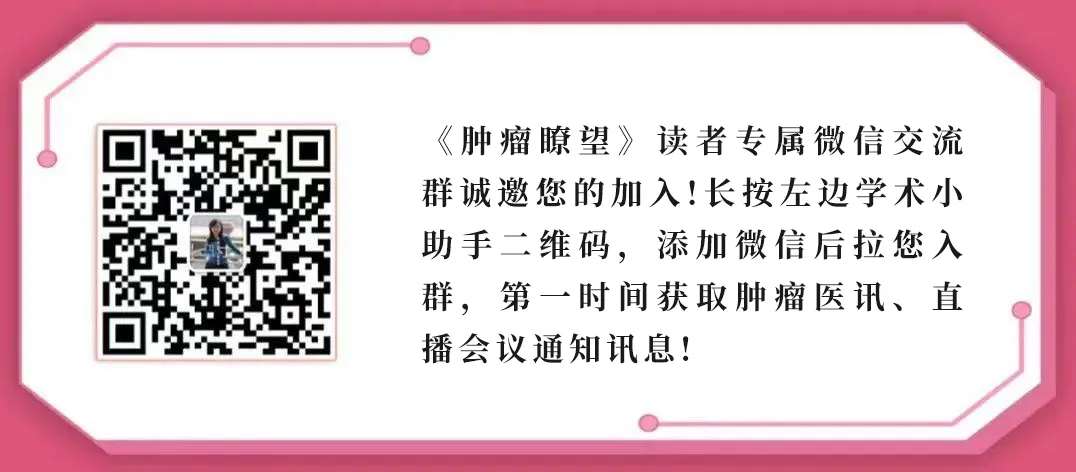|
|
作者:ioncology

编者按:近年来,随着造血细胞移植(HCT)技术的进步,移植后的长期生存率得以持续增加,约80%的患者可获得移植后2年以上的无病生存。然而,随着时间的延长,移植后长期生存者仍面临长期合并症的风险,直接影响到长期生存者的生活质量及移植后的结局。2024年4月14日至17日,第50届欧洲血液和骨髓移植学会(EBMT)年会在英国格拉斯哥隆重举行。会上,来自美国威斯康星州儿童医院的血液和骨髓移植专家Rachel Phelan教授介绍了不久前更新的《移植和细胞治疗长期生存者筛查和预防措施的国际建议》(Bone Marrow Transplant. 2024 Feb 27. Epub ahead of print. )。《血液时讯》特邀请Phelan教授走进现场会客室,和广大读者分享、解读指南更新的重要内容。
《肿瘤瞭望-血液时讯》:
请您为我们分享一下此次指南更新的主要内容有哪些?
Phelan教授:随着造血细胞移植(HCT)和细胞疗法适应证的不断拓展以及移植技术的不断进步,每年施行HCT的数量在持续增加。HCT技术和支持性护理的不断改进使得更多患者能够长期生存。获得长期生存的患者仍面临着长期合并症的风险,其中包括移植前、围术期和移植后暴露以及其他潜在风险因素的影响,并且每位患者在移植后都有其独特的诱发因素和并发症。《移植和细胞治疗长期生存者筛查和预防措施的国际建议》最初于2006年发布,并于2012年更新。考虑到HCT和细胞治疗实践的不断变化,美国移植和细胞治疗学会(ASTCT)再次召集了国际专家小组对指南进行了修订,旨在进一步改善移植患者的长期生存。
与之前的指南相比,新版指南进行很多内容上的更新。概括来说,新版指南增加了:造血并发症部分;对于心理适应、认知功能障碍和生活质量建议、更新的疫苗指南;移植后的肿瘤筛查的评估;以及特殊人群指南,包括自身免疫、血红蛋白病、骨髓衰竭、先天性免疫疾病/代谢紊乱、骨髓瘤/淀粉样变性、青少年和年轻患者、老年患者。我们需要花很长时间才能学习完所有内容,希望大家能够重点关注血液学并发症以及如何进行长期监测这些部分的内容。关于如何监测恶性肿瘤,尤其是结直肠癌、头颈部鳞状细胞癌等并发症的发生有很多更新,希望读者们特别注意这部分内容。除此之外,有关患者长期认知功能和生活质量的评估,对于患者移植后的生活质量是非常重要的,我们也希望能够受到关注。
(上下滑动查看英文原文)
The Guideline is very extensive, and is open access and now available for everybody to use in their standard clinical practice. You are correct - we continue to perform more and more transplants every year, and we also continue to do a lot better at transplanting patients, in terms of improvements in overall survival. We anticipate larger and larger numbers of long-term survivors, so it is really important that all of us are aware of the specific long-term side effects or late effects that they may be at risk for. Every patient has a unique set of predisposing factors and complications post-transplant that puts them at risk for those late effects, as well as what they receive for treatment. There were a number of different updates in this Guideline compared to the prior one. It will take a really long time for me to go through all of them, but a few of the things that I updated in the talk at EBMT were the addition of a number of sections to the Guideline, including a focus on hematologic complications and how those should be monitored long term. There were also a number of updates on how surveillance for subsequent malignant neoplasms should be approached, specifically with the development of complications such as colorectal cancer or squamous cell carcinoma of the head and neck. I would like the reader to pay particular attention to those. We also substantially updated our sections on cognitive function and quality of life assessments in the long term. We have come to recognize more and more that what is important to the patient’s quality of life as they are living for decades post-transplant really becomes critical. So we provide some recommendations for assessments of quality of life, patient reported outcomes, caregiver and spousal support, as well as cognitive function post-transplant. We really want to make sure that attention is paid to those sections as well.
《肿瘤瞭望-血液时讯》:
为了进一步优化移植后的远期预后,请您谈一谈在HCT全流程管理中还有哪些方面可以进行优化选择?
Phelan教授:在移植过程中,为了提高患者的长期存活率,可以优化的许多方法实际上取决于患者的年龄,以及他们移植的潜在适应证。所以,可以优化的点有很多,但是个人认为多年来我们已经做到了减少放疗的使用,这一点尤其在儿科患者中是我们一直努力的目标。患者的最终目标是希望实现治愈,但我们也必须知道,如果不能放弃一些毒性较大的治疗手段,那么我们可以通过对这些患者进行长期监测,尽可能地早期发现治疗的长期副作用,从而能够进行积极地干预和治疗。同时,基因治疗的出现也可能改变我们对一些非恶性疾病移植患者的长期生存。总而言之,个人认为在移植和其他治疗方面我们有很多令人兴奋的进展,它们有望降低儿童和成人患者长期生存的风险。
(上下滑动查看英文原文)
A lot of what can be optimized during the transplant process to improve long-term outcomes for survivorship is really dependent on the age of the patient, and what their underlying indication for transplantation is. So it is really varied, but I would say, over the years, we have accomplished things like using less radiation, specifically in pediatric patients (which is something we are striving for), and there are a number of different clinical trials trying to decide whether or not we need to use radiation in pediatric and adult patients. Sometimes we still do though. The ultimate goal is to achieve that cure, but then we also need to know that if we can’t take away some of the more toxic therapies, that we need to monitor those patients perhaps a little differently long term in order to identify long-term side effects early in order to facilitate the diagnosis and treatment of those long-term side effects. The advent of gene therapy I think will also change our long-term outlook for some patients who are transplanted for non-malignant diseases. I think there are a lot of exciting changes in transplant and other therapeutic approaches that hopefully will decrease the risk of late effects in pediatric and adult patients. There is more to be seen, but it is really important that we continue to study this area, and hopefully we will see improvements over time.
《肿瘤瞭望-血液时讯》:
近年来,CAR-T细胞疗法成为血液肿瘤患者的一种新型选择,并且可以为患者带来临床获益。请您谈谈未来CAR-T细胞疗法是否会影响移植在血液肿瘤患者治疗中的地位?
Phelan教授:近些年,CAR-T疗法的进展的确让人兴奋不已。它可以作为恶性血液肿瘤高危或复发/难治性患者的独立治疗手段,同时也可以作为患者移植的桥梁。然而,目前的CAR-T细胞疗法还不能成为治愈患者的万能药。我们正在研发多种不同靶点的CAR-T细胞产品。值得注意的是,真正令人兴奋和我们寄予希望的是CAR-T的毒性相对较小。我们知道,与移植相比,CAR-T在急性期的毒性可能较小,但我们还需要继续长期跟踪这一疗法的长期潜在的副作用,特别是评估继发性肿瘤等问题。所以,尽管我们正在提出更多新颖的疗法,例如CAR-T细胞和基因治疗,但我们需要看到的并不是前六个月或第一年的结果,而是十年后的结果。希望通过更多长期性的观察随访研究来验证它们是足够安全的。
(上下滑动查看英文原文)
With CAR-T therapy, there is definitely a lot of excitement. There are multiple different ways they are being manufactured and ways they are being used, either as stand-alone therapy for patients who are high risk or relapsed for hematologic malignancies, or as a bridge to a transplant. I think our current CAR-Ts are definitely not a cure-all for patients, but we are discovering different ways to employ them, different ways to manufacture them and different targets for the CAR T-cells themselves. So this is, again, a burgeoning area of research that everybody is very excited about. Once again, I want to emphasize that what is really exciting and what we are hoping is that they are less toxic. We know they are likely to be less toxic in the acute term compared to transplant, but we need to continue to follow for potential side effects long term in these newer and more exciting therapies as well, especially assessing things like secondary or subsequent hematologic malignancies and so on, things that we may not necessarily anticipate. Even though we are coming up with more novel therapies such as CAR T-cells and gene therapy, we need to recognize that it is just not seeing how the outcomes are in the first six months or the first year, but the outcomes ten years following the administration of that therapy as well.
(来源:《肿瘤瞭望–血液时讯》编辑部)
声 明
凡署名原创的文章版权属《肿瘤瞭望》所有,欢迎分享、转载。本文仅供医疗卫生专业人士了解最新医药资讯参考使用,不代表本平台观点。该等信息不能以任何方式取代专业的医疗指导,也不应被视为诊疗建议,如果该信息被用于资讯以外的目的,本站及作者不承担相关责任。

|
|